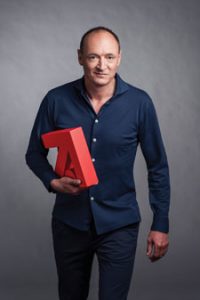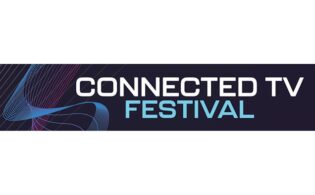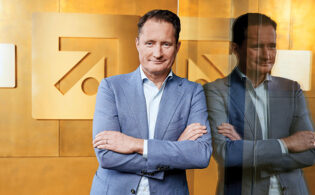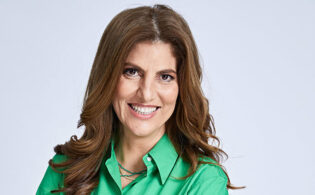 ProSieben first hit the airwaves in 1989 and quickly became a destination for young viewers. The channel, which is still a market leader among the 14 to 49 demographic, is part of the entertainment division at ProSiebenSat.1 Media alongside SAT.1, kabel eins and maxdome, among other assets. Red Arrow Studios is housed in the content production and global sales division and the NuCom Group, the commerce division, encompasses a range of businesses, from matchmaking to beauty and lifestyle. Max Conze was appointed ProSiebenSat.1 Media’s CEO last year. He talks to World Screen about serving consumers and advertisers on multiple platforms, investing in engaging content, and the growth potential of esports and the group’s commerce businesses.
ProSieben first hit the airwaves in 1989 and quickly became a destination for young viewers. The channel, which is still a market leader among the 14 to 49 demographic, is part of the entertainment division at ProSiebenSat.1 Media alongside SAT.1, kabel eins and maxdome, among other assets. Red Arrow Studios is housed in the content production and global sales division and the NuCom Group, the commerce division, encompasses a range of businesses, from matchmaking to beauty and lifestyle. Max Conze was appointed ProSiebenSat.1 Media’s CEO last year. He talks to World Screen about serving consumers and advertisers on multiple platforms, investing in engaging content, and the growth potential of esports and the group’s commerce businesses.
WS: When you joined ProSiebenSat.1 Media last year, what did you see as the company’s strengths?
CONZE: I had no entertainment background when I joined ProSiebenSat.1, but I’ve been around consumer technologies all my life. What I was excited about is that ProSiebenSat.1 has a unique combination of strong entertainment brands and equally strong e-commerce platforms. There is an analogy to how Alibaba and Tencent in China are run, but in the Western world, we are pretty much the only company that is set up this way. There are significant synergies between entertainment and commerce that we can build on in the future. Also, the media industry is in huge transformation and I don’t see that as a threat but rather as a fantastic opportunity. ProSiebenSat.1, particularly compared to America, has a great starting point in Germany. Broadcasting here is fundamentally a three-player market with us, RTL Group and the public broadcasters. Our strength is that we have brands, stars, huge reach and convening power. Now we need to take that and convert it into how people want to consume entertainment in the future.
WS: What do linear channels need to do to remain relevant in today’s environment?
CONZE: Let me answer this in two parts. First, I do not look at the world through the framework of linear and nonlinear channels. I’m a consumer guy and when I speak to my 18- and 19-year-old daughters, that’s not how they see the world. They see it through the lens of content. They will get that content wherever it’s convenient for them to access it. If you start there, the first recognition is that entertainment is a great business to be in. It’s a growing business. Second, the way we make most of our money is through advertising. Video—and I define video as the total of all the moving picture content being consumed and advertised on all linear and digital platforms—is also growing. To benefit from this development, we need our content to stay meaningful and relevant. That means it has to be more local, more live, more factual and more entertaining, because these are the areas that are difficult for Netflix and Amazon to compete in. And we need to make sure that that content is distributed both on the linear channels as well as on digital platforms, whether ours or others. Our joint venture with Discovery, Inc. plays an important role in this context. We are combining Discovery’s and our channels, our SVOD service maxdome and Discovery’s Eurosport Player into a new product—an aggregator platform where German consumers can conveniently access everything from news to great shows and more. Although the new product has not yet been launched, we already have 2.5 million monthly unique users on the existing streaming service. I am convinced that we can have a meaningful place here alongside Netflix and Amazon. We will make it available as an ad-supported platform, with an SVOD layer for those who want less or no advertising and more exclusive content. We’re planning to launch this summer. And we are bringing other content providers on board. ZDF, one of the two public broadcasters, has already agreed. And we’re having very constructive conversations with other players in the market.
WS: ProSieben celebrates its 30th anniversary this year. What have been the keys to its success?
CONZE: ProSieben has one of the strongest channel slogans in the world, “We Love to Entertain You.” We have a passion for creating wonderful programs that you will find entertaining and want to watch; that has longevity. ProSieben has always been an innovator in Germany, with a great stable of big German stars and entertainers, and we continue to build on that strength. Our long-running shows, like Germany’s Next Topmodel with Heidi Klum, are cultural icons. Or take Galileo, which has been our factual science show for 20 years now. It’s one of the top three most successful factual formats around the world, one we have sold from Hungary to Asia, and a hit with the new generation of viewers, with 20 percent of the total viewing time on Galileo being digital. The strength, attitude and content breadth that ProSieben has as a channel are universal and will continue to be meaningful in a linear world. Let’s not forget that people still watch close to 200 minutes of TV compared to 30 to 35 minutes of streaming per day. Yes, streaming is rising, but these worlds live together. In Germany, ProSieben—and “We Love to Entertain You”—has more than 95 percent brand recognition. It’s a real icon and it’s up to us to continue to translate that icon in the broad world of entertainment.
WS: Does imported programming still play an important role on ProSieben and other channels in the group?
CONZE: I believe that we need a good balance between local programming, programming we have invented and developed ourselves and licensed U.S. formats. Take Joko and Klaas, who are big stars on German TV. We have quite a symbiotic relationship; we jointly develop new shows and constantly try out new ideas. We combine that with buying some of the greatest Hollywood blockbusters and U.S. content, which is still popular on our channels. And then, of course, there is our own production network, Red Arrow Studios, which feeds our content pipeline. We plan to make greater use of our production business to supply programs for our entertainment platforms and channels. The content we commission from Red Arrow for our German channels will increase significantly. But that’s just one piece. We are also having very active conversations across the creative community in Germany and have increased our total content investment. Last year, we spent about €1 billion on content. Now we are investing an additional €80 million. About half of the total amount goes into local productions. That’s a big message we are sending to the creative community because that’s also more than the share of Netflix’s $1 billion European content investment that is landing in Germany.
WS: Given your experience at Dyson and Procter & Gamble, you know firsthand what advertisers’ media needs are. How is the group working with advertisers?
CONZE: First, advertisers need and want high-quality content, reach and scale. TV is still the only medium that can provide that. And in many ways that medium is becoming scarcer and the product is becoming more valuable. Not all advertisers necessarily like that because it means it’s becoming more expensive. It’s a function of the fact that television is a very singular product. Second, we are very focused on moving away from segregated universes, where you have TV on the one side and digital on the other, to an integrated universe. Advertisers want us to provide total reach to find out how many people have received their message—regardless of the channel. In the next step, we will provide them with a smarter reach to be able to better target and address consumers and audiences. That’s why we see high potential in our tech marketing innovations such as addressable TV, which means the possibility of selectively broadcasting digital advertising on connected TV sets via IP-targeting. About 20 percent of our total TV reach today qualifies as addressable, so we are actively working to create the advertising server infrastructure to drive and serve that market on a bigger scale. Therefore, we are also stepping up our investments in data. We are increasingly solution-focused rather than being a generic media house. Today we have technology solutions, reach- or performance-based solutions and social media solutions. We are commercializing a lot of our content via third-party platforms—this way, we know not only the reach of our channels but also the total reach gained on social media, TV and digital magazines. We constantly talk and listen to our advertisers to understand their marketing goals—be it awareness, click-throughs, etc.—and we can put together a package to help them reach those objectives.
WS: What are your plans for 7Sports and eSports.com?
CONZE: Esports is the fastest growing segment of the sports and entertainment industry and an excellent fit for our portfolio. For quite some time, we have been the major broadcaster covering esports not only through a digital channel but also through linear programming. We just set up eSports.com, a 50/50 joint venture with an international startup, to establish a digital esports platform for the German-speaking market as part of our esports strategy. We’re in active discussions about how to support the leagues, the teams and the stars. We want to be an active agent to build that whole ecosystem.
WS: Tell us about ProSiebenSat.1’s commerce division.
CONZE: Commerce is a very important and fast-growing part of the group. ProSiebenSat.1 is a €4 billion company and NuCom Group, our commerce unit, will contribute around €1 billion of that in 2019. It’s a business we’re growing organically at a 10- to 15-percent range. The portfolio currently consists of ten companies that are leading in their segments and that we have bundled in four core verticals. We have a brand called Verivox on what used to be called online price comparison. Or, as I like to say, “saving people money.” We do that for energy, mobile and insurance contracts. We have a company called Parship Elite Group, which is number one in matchmaking in the German-speaking countries. We bought eHarmony in the U.S. We have Flaconi, which is the number two beauty e-retailer, and it’s growing 40 percent a year. I spent some of my early years at P&G in beauty. It’s a business I love because the dynamics are great and people are willing to spend money to look good. The fourth is experience and gift vouchers with two companies that make us the market leader in German-speaking territories. That’s a business with great potential because consumers’ tastes everywhere in the world are shifting from acquiring physical things to acquiring experiences.





